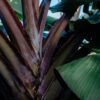Text by Rae Sojot
Images by John Hook
The Coles
Tall and lithe, artist Peter Shepard Cole cuts a striking figure against the backdrop of Rocky Point, a prime surf break along O‘ahu’s North Shore. Ducking into the cozy, makeshift art studio attached to the beachfront redwood house where he grew up, he rifles through a painter’s miscellany: blank canvases propped up against dusty storage bins, tapered brushes gathered neatly atop a strip of cardboard, an assortment of glass paint jars.
A piece in progress rests on an easel. It’s a seascape, the latest in Cole’s body of work paying homage to a prescient presence in his life: the ocean. On the canvas, shifting tones of turquoise rise along the face of a cresting wave, their hues backlit by a midday sun. A triangle of cerulean sky peeks out from behind. The water looks exuberant and playful, capricious and preternaturally real. Some of Cole’s more turbulent seascapes look so true to life, viewers can “feel the sea,” he says. He grins sheepishly, recounting how one of his clients, though she was ecstatic with her commissioned seascape, confessed it made her seasick.
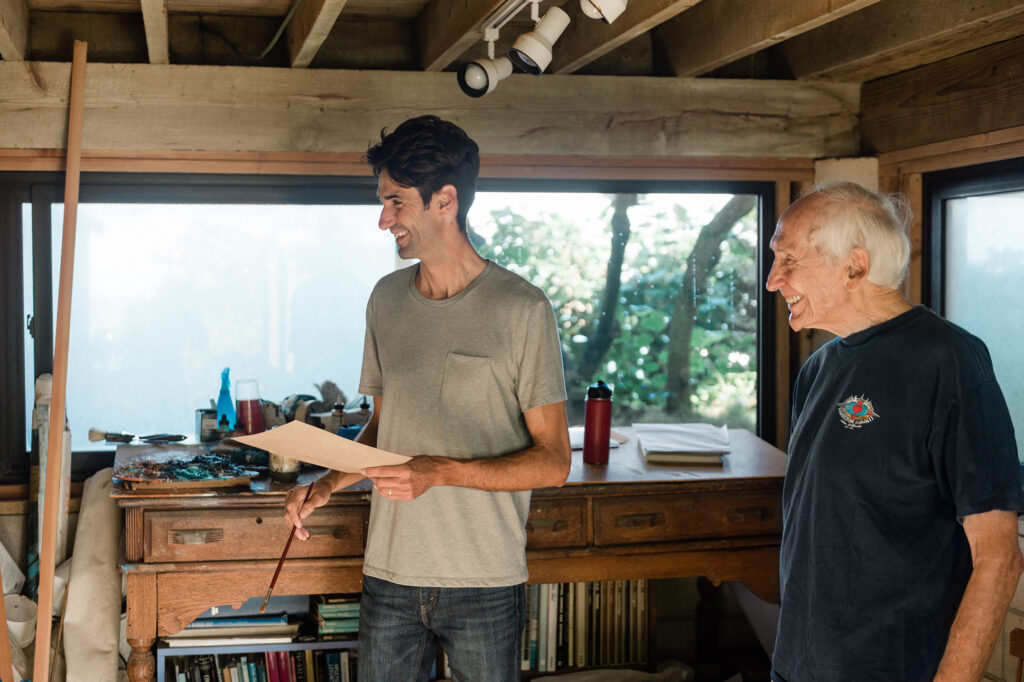
The ocean has long held sway over Cole. His father, Peter Cole, who also paints, arrived on O‘ahu in the 1950s as part of the big-wave surfing vanguard. There, the young Cole spent is childhood along the “Seven Mile Miracle,” the stretch of coast considered surfing’s mecca. The ocean was his playground. Later, as an adult, it became something more: artistic inspiration.
But depictions of idealized, balmy tropical waters hold little appeal for the younger Cole. They are inaccurate, too trite and too flat, he feels. Instead, he challenges himself to capture the true dynamism of the North Shore ocean through movement, mood, and color. It’s a slow, angst-ridden process. He’ll often paint for hours, painstakingly examining each stroke or color. “I wish I could paint like my dad sometimes,” Cole says. “He paints with ease and confidence and speed.”
The elder Cole chuckles at his son’s assessment. “I don’t have the patience to do what he does,” he says.

Inside the Cole family home, the walls are filled with art by both father and son. The subjects and styles are myriad—studies in ocean and harbors, mountains and forests, in oils, acrylics, and watercolors. The elder Cole holds a special fondness for autumnal landscapes, particularly the fiery reds and golds of a New England fall. “Those are the most beautiful scenes in the world,” he says. (His wife, Sally, hails from Connecticut.)
As the pair highlight some of each other’s favorite watermen pieces, their mutual admiration is evident. The younger Cole points to a painting of a surfer inching his way to a noseride and marvels over his father’s ability to capture action and point-of-view perspective. The elder Cole proudly holds out a framed print of a piece that his son painted of him with his quiver of boards. “Look how real that looks,” he says about the painting, shaking his head in amazement.
The Smiths
Even at 10 years old, Hawai‘i-born surf photographer CJ Smith was all about the barrel. “My whole room was covered ceiling to floor with cut-outs from bodyboarding magazines,” Smith recalls with a sheepish grin. “I’d go out to Sandy’s with a disposable camera and try to get that perfect shot.” Two decades later, his barrel fever still runs high, though Smith has long since upgraded his Insta-matic to a Sony A9.
Most mornings find Smith at the beach during “golden hour,” that brief, dreamy window of time near dawn that photographers prize for its soft light. While Smith enjoys capturing images from shore, it’s actually being in the ocean where he excels. The pursuit of the perfect barrel requires a healthy vigilance of one’s surroundings, Smith explains. Shifting currents, incoming swells, and dangerous shore break can make or break a shot. Luckily for him, being in the water feels natural. A former standout water polo player for University of California Los Angeles, Smith puts to use the thousands of hours he spent swimming, sprinting, and honing his eggbeater kick—that infamous, leg-burning move water polo players master to keep vertically afloat.
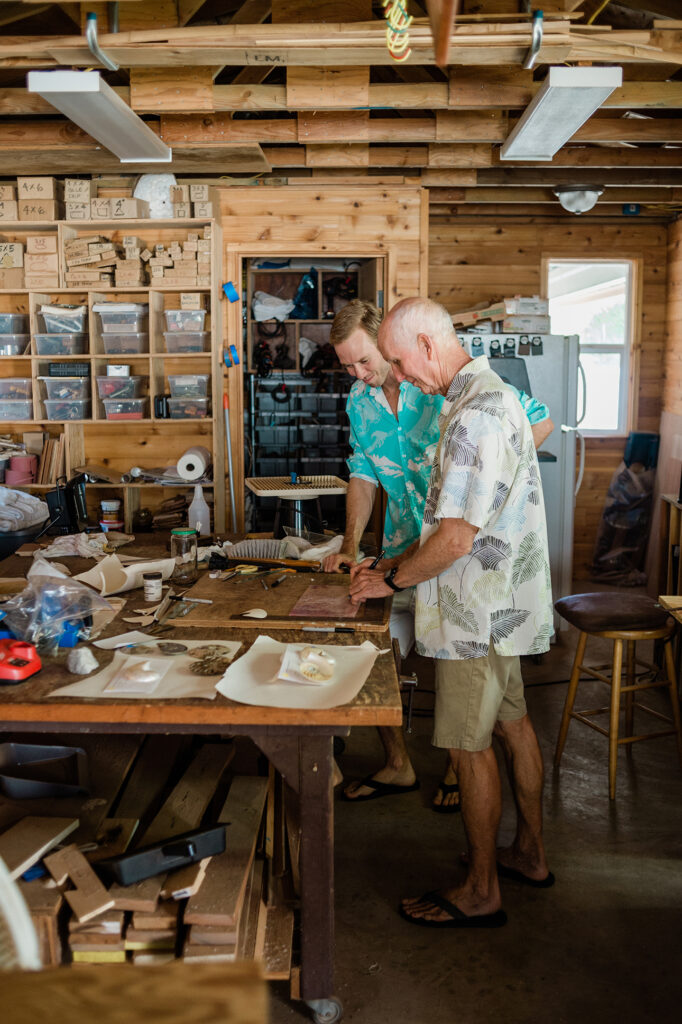
“Being a water polo player has definitely helped,” Smith says. “You gotta swim out as fast as you can, otherwise you get slammed on the head, not just by the wave, but your camera, too.” He winces and smiles while rubbing his head in memory of a lesson learned.
According to Smith’s father, Ken, his son’s prowess in the water isn’t the only reason for his success as an athlete or professional surf photographer. It’s also his dedication to the craft. Ken should know, since he was CJ’s water polo coach growing up. “CJ put a lot of time and effort into the sport,” Ken says. “It paid off.”
A retired teacher and former UCLA water polo player himself, Ken is a beloved figure in the state’s water polo scene, having had a significant role in producing Hawai‘i water polo talent. His coaching advice to others, whether artist or athlete? “Stick with it,” he says. “Perseverance and determination will lead to talent.”
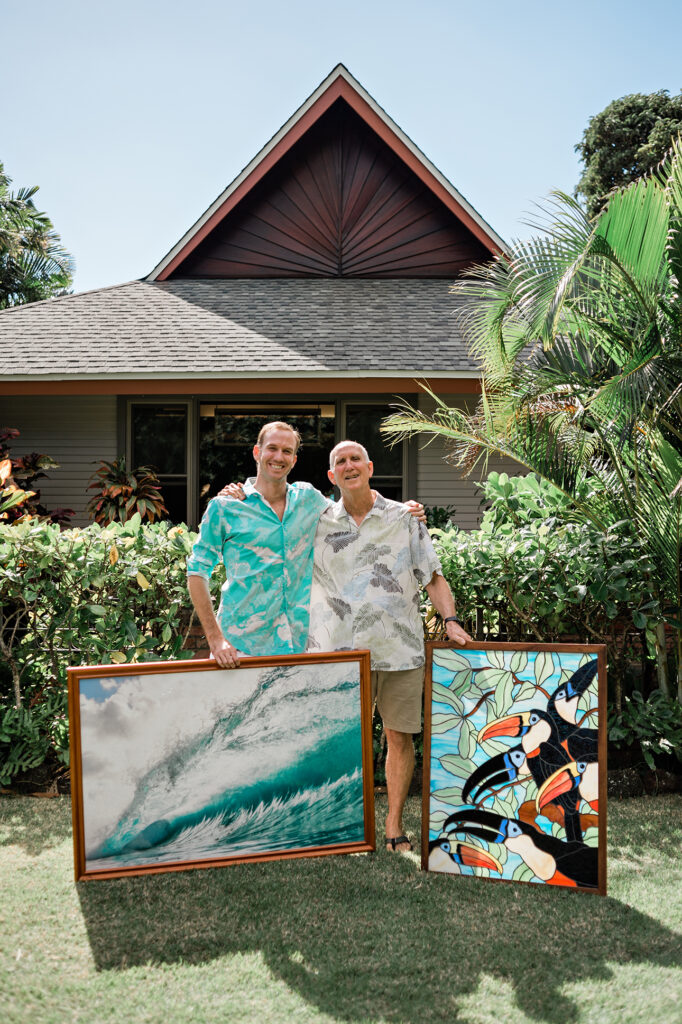
Ken extends that concept of persistence to his own creative endeavors in woodworking and stained glass. In his small workshop behind the family’s Mānoa home, he rummages through a dusty drawer and pulls out an oblong, palm-sized blob of glass edged with lead. It’s a piece of stained glass, albeit rudimentary.
“Can you tell what this is?” Ken asks his son. CJ looks perplexed. “It’s a strawberry,” Ken says. “The first piece I ever did!” Father and son both laugh. Mere steps away in the house is more evidence of Ken’s artistic talent: a series of gorgeously crafted ‘ukulele, richly hued wooden treasure boxes inlaid with glass and seashells, and an intricate floral stained-glass trellis over the front door.
As Ken points out a few of his latest projects, a look of quiet pride flickers across his face, and it’s mirrored in his son’s face. “Anybody can do it,” Ken says humbly. “We might not do it as well as someone else at first, but we all can do it.”
The Mizunos
“Music is a powerful enhancer,” says Hawai‘i surfer Noa Mizuno, who for the past year has been honing his skills not only in the water but also in the sound room and DJ booth. A recent collaboration on a short surf film with Japanese record producer Shingo Annen required Mizuno, already a music aficionado, to become a quick study in musical scoring. Learning to lay tracks to his own surf footage proved an intense but wholly gratifying experience for the 20-year-old. It also illuminated a path away from the restrictions on self-expression that corporate-sponsored professional surfers often face. “I don’t want to be defined as just as surfer,” Mizuno says. “What I do is different from who I am.”
A love for music, like his love for surfing, is a vibrant leitmotif of Mizuno’s life. Many of his childhood memories are gilded with sound: scribbling in his journal as a fourth grader listening to Kayne West; riding in the car to Waikīkī surf contests with his father, Jake, a retail entrepreneur, blasting AC/DC on the stereo; standing in the French seaside town Hossegor mesmerized by live music spilling from outdoor cafes. Years later, as a young adult, it was in Hossegor that Noa found himself moved anew by the revelatory effect of music. He took the experience as a sign to integrate music even more thoroughly into his life.
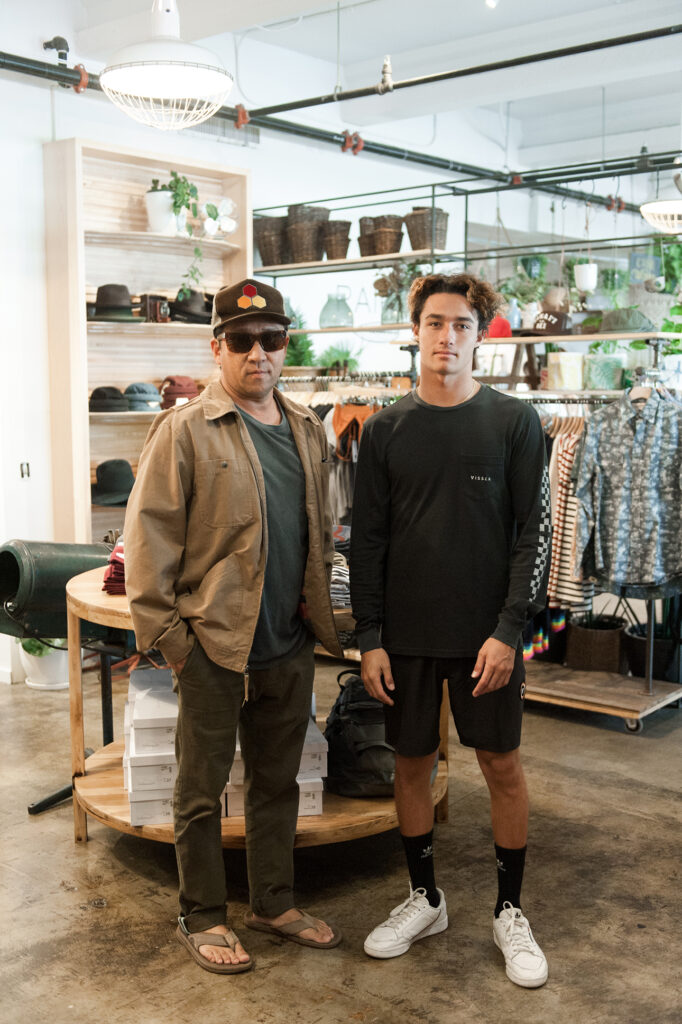
Fortunately for Noa and his father, their work provides platforms for their passions. As Noa finds ways to intertwine music and surfing, so too does Jake strike a balance between the corporate and collective-minded aims of his retail shops Milo and Stoke House, both of which are in Kaka‘ako. Jake was drawn to that area, an urban mix of commercial, retail, and residential use, for its palpable, creative energy. “It’s a community with purpose,” Jake says. “The place has grown organically.” Noa believes the keystone of his father’s success is not only his business acumen but also his ability to build sincere relationships. “My dad is the most genuine person I know,” Noa says. “I admire how he wants to create a community and wants to bring everyone with him.”
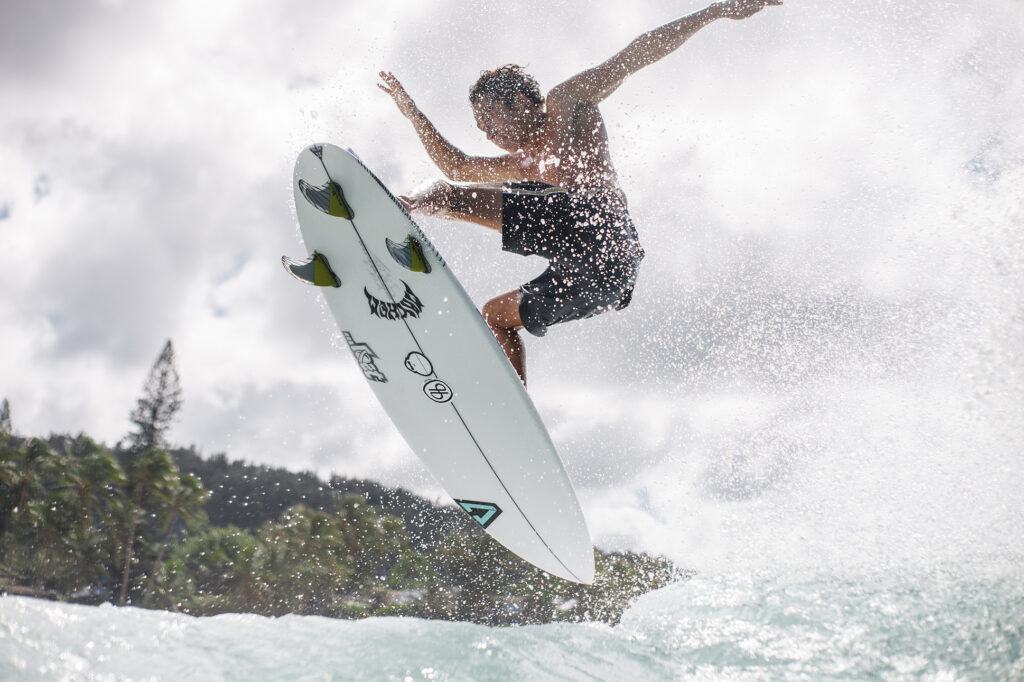
When asked what kind of traits he and his father share, Noa pauses, then laughs a few moments later, having realized that he might have more in common with his father than he first suspected. They’re both drawn to culture and arts. They’re both stubborn and sometimes hard on themselves. But creative minds think alike, too. “His brain is always working, he’ll never retire,” Noa says. “Me, I always want to be pursuing something.”

